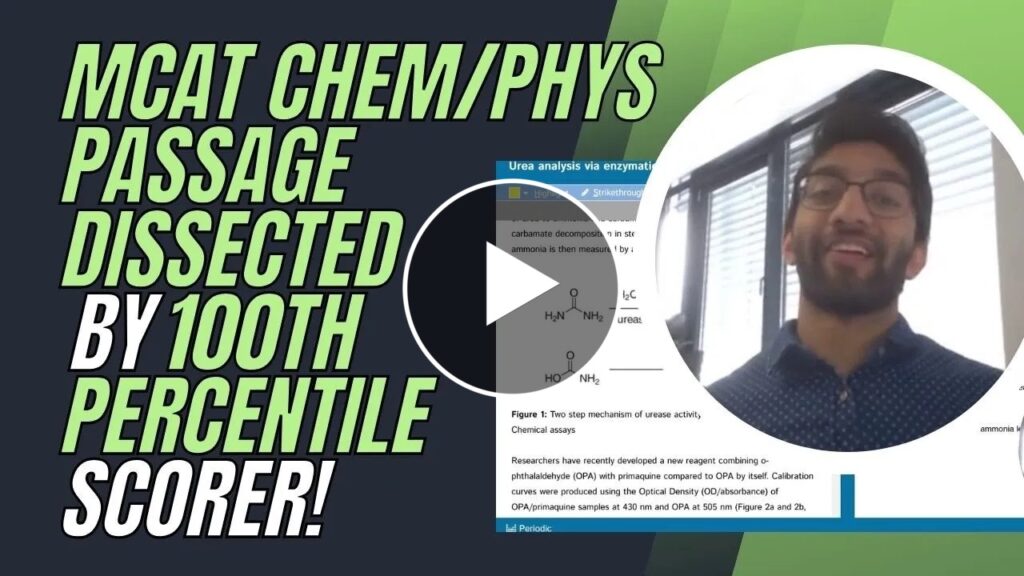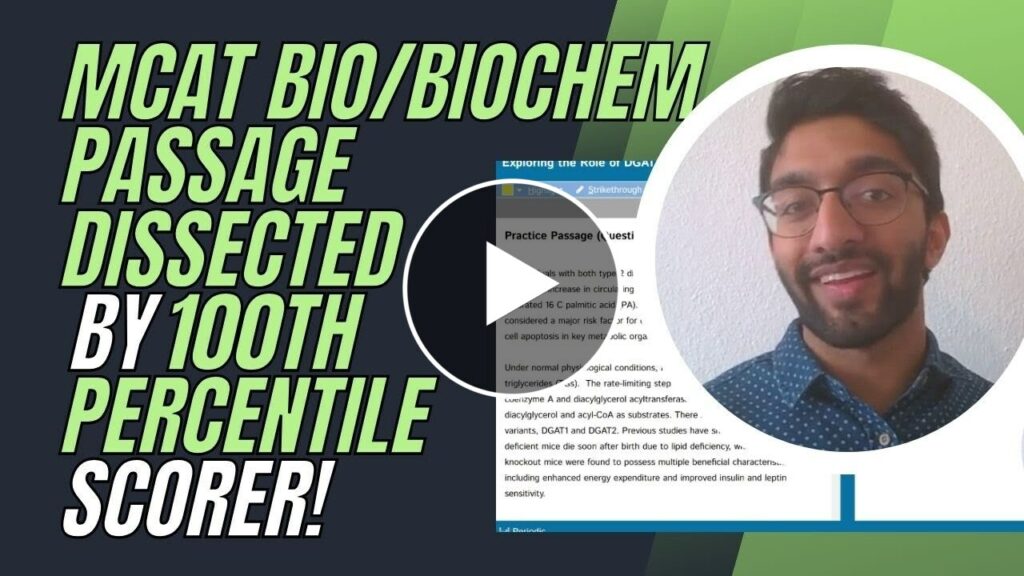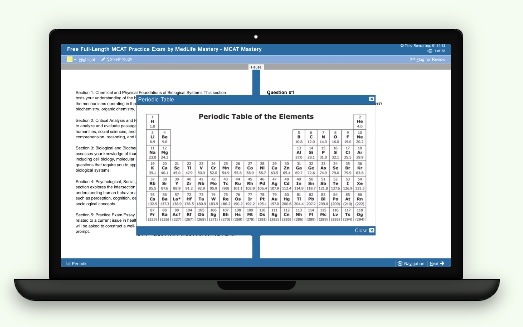Imagine the smell of brown butter chocolate chip cookies — fresh out of the oven. Or a fresh pizza with tomato sauce, cheese, soppressata, fresh basil, and a drizzle of hot honey. Are you salivating yet? When we see, smell, taste, or even imagine a tasty meal, our salivary glands in front of the ear, under the tongue, and near the lower jaw produce saliva (spit) to kick start the process of digestion.
The digestive system is one of the largest organ systems in the body spanning approximately 9 meters long! Its primary function is to break down food and absorb nutrients into the bloodstream to fuel cellular processes.
Now that we know the fundamental functions and importance of the digestive system, we can dive a little further into looking at key terms, definitions, and topics that will be important for the MCAT.
Let’s get started!
Digestive System on the MCAT: What You Need to Know
Topics on the digestive system will primarily appear on the Bio/Biochem section of the MCAT. These questions may come up as either passage based questions or fundamental discrete questions. The MCAT particularly loves testing the digestive system using discrete questions.
Though it is hard to know how often you might run into digestive system questions, it is fairly high yield due to the interdisciplinary nature of the digestive system; including the functioning of enzymes, anatomical structures, and the circulatory system.
Introductory biology account for 65% of the content covered in the Biological and Biochemical Foundations of Living Systems section (Bio/Biochem) and 5% of content tested in the Chemical and Physical Foundations of Biological Systems (Chem/Phys), and 5% of material on the Psychological, Social, and Biological Foundations of Behavior (Psych/Soc).
Important Sub-Topics — Digestive System
Anatomy of Digestive System
The digestive system is composed of the digestive tract (mouth, esophagus, stomach, small and large intestines, rectum and anus) and accessory organs (liver, pancreas, gallbladder).
Digestive Tract Organs
Organ | Functions |
|---|---|
Mouth | -Mechanical digestion: chewing/mastication -Chemical digestion: saliva contains salivary amylase, lingual lipase, and lysozymes. |
Esophagus | -Separated from the mouth via the esophageal sphincter. -Contracts and relaxes (peristalsis) in order to propel bolus from the mouth to the stomach. |
Stomach | -Composed of the Duodenum, Jejunum and Ileum. -Main site of digestion and absorption. -Has villi and microvilli that increases the surface area for digestion and absorption. |
Large intestine | Function: -Water storage -Bacteria produce vitamin K. |
Anus and Rectum | Rectum: -Stores feces. -Anal sphincter separates the rectum from the anus. |
Accessory Organs
Liver | Function: Produces bile which travels through the hepatic ducts, and then stored in the gallbladder. |
Gallbladder | Stores bile produced in the liver. |
Pancreas | Chemical digestion: Pancreas will release enzymes into the small intestine via the pancreatic duct. -Pancreatic amylase -Pancreatic lipase -Nuclease -Chymotrypsinogen -Carboxypeptidase -Elastase -Trypsinogen |
Full Study Notes : Anatomy of the Digestive System
For more in-depth content review on anatomy of the digestive system, check out these detailed lesson notes created by top MCAT scorers.
Steps in Digestion
There are 2 types of digestion:
1) Mechanical Digestion: The churning and mixing of food to generate smaller food particles that can be acted upon by various enzymes.
2) Chemical Digestion: Through hydrolysis and various enzymes, complex molecules can be broken down, such that they can be absorbed and utilized by cells.
After digestion, absorption occurs in the small intestines, where nutrients often undergo active transport through the small intestinal membrane and into the lymph or blood stream.
Full Study Notes : Steps in Digestion
For more in-depth content review on steps in digestion, check out these detailed lesson notes created by top MCAT scorers.
Outside Control of the Digestive System
The digestive system possesses its own nervous system called the enteric nervous system. It is a branch of the autonomic nervous system, which means that it operates independently of the central nervous system. It relies on the input of the parasympathetic and sympathetic nervous system.
The parasympathetic nervous system can stimulate the enteric nervous to increase enteric function, and defecation. Meanwhile, the sympathetic nervous system will inhibit enteric function, decreasing defecation.
Full Study Notes : Outside Control of Digestive System
For more in-depth content review on outside control of digestive system, check out these detailed lesson notes created by top MCAT scorers.
Important Definitions and Key Terms — The Digestive System
Term | Definition |
|---|---|
Salivary Amylase | Breaks down complex carbohydrates (starch) into shorter oligomers |
Lingual Lipase | Hydrolyzes triglycerides into diglycerides, free fatty acids, and glycerol |
Lysozymes | An antibacterial enzyme which is a part of the nonspecific immune system (innate immunity) |
Esophageal Sphincter | A bundle of muscle at the top of the esophagus |
Cardiac Sphincter (aka. Lower esophageal sphincter) | Prevents the highly acidic gastric juices from entering the esophagus |
Peristalsis |
The involuntary contraction and relaxation of muscles of the esophagus and intestines, creating wave-like movements that propel contents through the digestive tract. |
Bolus |
A mixture of food and saliva that enters the stomach |
Chyme |
A mixture of food that has been digested by the stomach, passing from the stomach to the small intestine |
Pyloric Sphincter |
Controls the movement of chyme from the stomach to the small intestine |
Pepsinogen |
A zymogen secreted by the stomach chief cells, which are converted into pepsin by HCl |
Gastrin |
A peptide hormones that is produced by G cells and stimulates the secretion of HCl from the parietal cells of the stomach |
Bile |
Emulsifies fat and is composed of bilirubin, bile salts, and cholesterol |
Pancreatic Amylase |
Breaks down carbohydrates into mono- or disaccharides for absorption |
Pancreatic Lipase |
Hydrolyzes lipids in the small intestines for absorption |
Nuclease |
Hydrolyzes phosphodiester bonds between nucleic acids in the small intestine |
Trypsinogen |
Produced in the pancreas as a zymogen and is activated by enteropeptidase |
Trypsin |
A serine protease that activates other trypsinogen, chymotrypsinogen, proelastase and procarboxypeptidase |
Carboxypeptidase |
A protease that hydrolyzes a peptide bond at the carboxy-terminal end of a protein or peptide. Zymogen form: procarboxypeptidase |
Enteropeptidase |
Enzyme produced by the duodenum to cleave trypsinogen into active trypsin |
Elastase |
A class of serine protease that is activated from the zymogen form proelastase |
Additional FAQs – Digestive Systems on the MCAT
Is the digestive system on the MCAT?
What are the 4 types of digestive systems?
A monogastric digestive system has one simple stomach. The stomach secretes acid, resulting in a low pH of 1.5 to 2.5. The low pH destroys most bacteria and begins to break down the feed materials.
Avian digestive systems are found in poultry. The ruminant digestive system has a large stomach divided into four compartments—the rumen, the reticulum, the omasum, and the abomasum.
The ruminant digestive system is found in cattle, sheep, goats, and deer.
A pseudo-ruminant is an animal that eats large amounts of roughage but does not have a stomach with several compartments.
What are the 7 steps of digestion in order?
Additional Reading Links – Study Notes for Cells on the MCAT
Additional Reading: MCAT Biology Topics:
- Cells on the MCAT
- Cardiovascular Systems on the MCAT
- Embryogenesis and Development on the MCAT
- Endocrine Systems on the MCAT
- Excretory Systems on the MCAT
- Genetics and Evolutions on the MCAT
- Immune Systems on the MCAT
- Nervous Systems on the MCAT
- Musculoskeletal Systems on the MCAT
- Reproduction on the MCAT
- Respiratory Systems on the MCAT







 To help you achieve your goal MCAT score, we take turns hosting these
To help you achieve your goal MCAT score, we take turns hosting these 





















 reviews on TrustPilot
reviews on TrustPilot